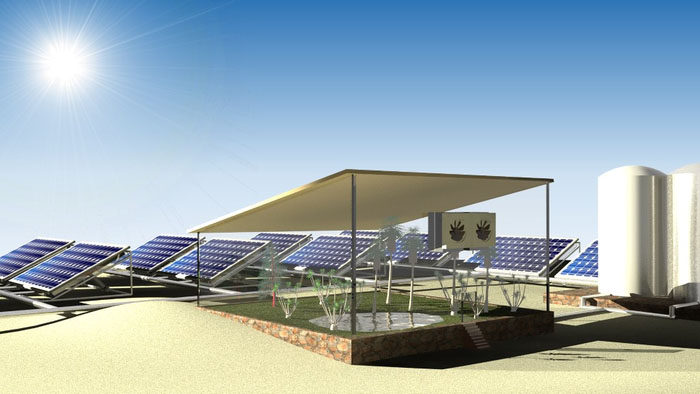| Mar 01, 2022 |
These solar panels pull in water vapor to grow crops in the desert
|
|
(Nanowerk News) Using a unique hydrogel, scientists created a solar-driven system that successfully grows spinach by using water drawn from the air while producing electricity. The proof-of-concept design, described in the journal Cell Reports Physical Science ("An integrated solar-driven system produces electricity with fresh water and crops in arid regions"), offers a sustainable, low-cost strategy to improve food and water security for people living in dry-climate regions.
|
|
“A fraction of the world’s population still doesn’t have access to clean water or green power, and many of them live in rural areas with arid or semi-arid climate,” says senior author Peng Wang, a professor of environmental science and engineering at the King Abdullah University of Science and Technology (KAUST). “Our design makes water out of air using clean energy that would’ve been wasted and is suitable for decentralized, small-scale farms in remote places like deserts and oceanic islands.”
|
 |
| This is a schematic of WEC2P deployed in an arid region. (Image: Renyuan Li)
|
|
The system, called WEC2P, is composed of a solar photovoltaic panel placed atop a layer of hydrogel, which is mounted on top of a large metal box to condense and collect water. Wang and his team developed the hydrogel in their prior research, and the material can effectively absorb water vapor from ambient air and release the water content when heated.
|
|
The researchers used the waste heat from solar panels when generating electricity to drive absorbed water out of the hydrogel. The metal box below collects the vapor and condenses the gas into water. Alternatively, the hydrogel increases the efficiency of solar photovoltaic panels by as much as 9% by absorbing the heat and lowering the panels’ temperature.
|
|
The team conducted a plant-growing test by using WEC2P in Saudi Arabia for two weeks in June, when the weather was very hot. They used the water solely collected from air to irrigate 60 water spinach seeds planted in a plastic plant-growing box. Over the course of the experiment, the solar panel, with a size similar to the top of a student desk, generated a total of 1,519 watt-hours of electricity, and 57 out of 60 of the water spinach seeds sprouted and grew normally to 18 centimeters. In total, about 2 liters of water were condensed from the hydrogel over the two-week period.
|
|
“Our goal is to create an integrated system of clean energy, water, and food production, especially the water-creation part in our design, which sets us apart from current agrophotovoltaics,” says Wang. To turn the proof-of-concept design into an actual product, the team plans to create a better hydrogel that can absorb more water from the air.
|
|
“Making sure everyone on Earth has access to clean water and affordable clean energy is part of the Sustainable Development Goals set by the United Nations,” Wang says. “I hope our design can be a decentralized power and water system to light homes and water crops.”
|

